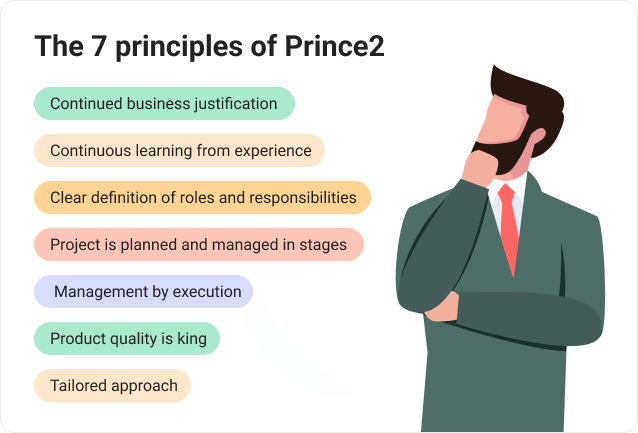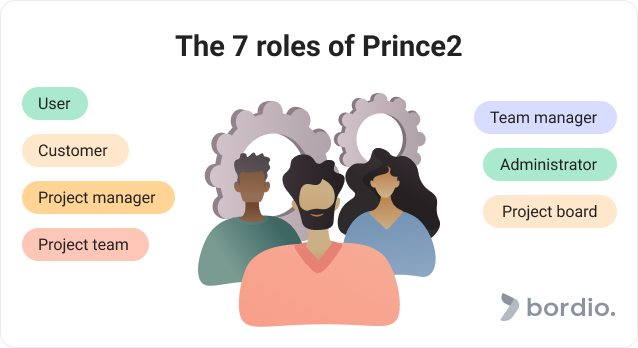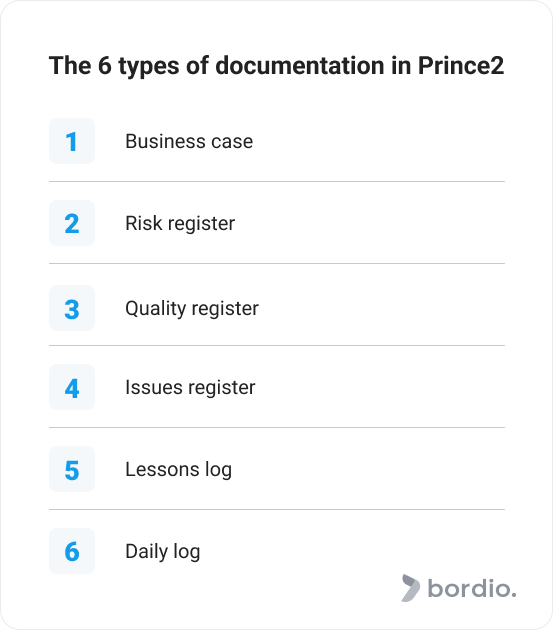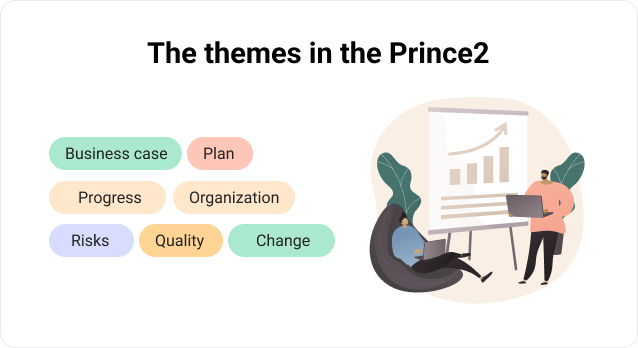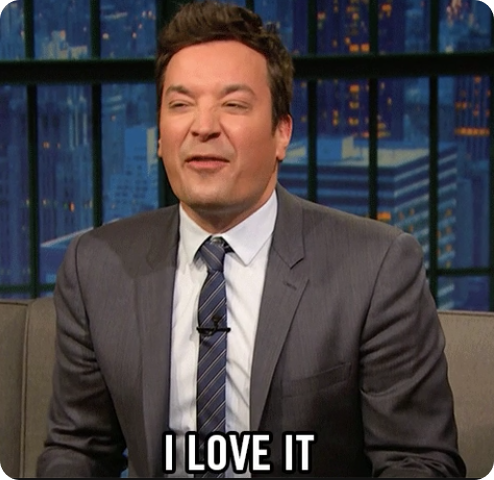PRINCE2 project management methodology is widely known in the United Kingdom but is not as widespread outside of it. And this methology can be even used teamed with time management software. Nonetheless, it is worth learning about the PRINCE2 principles and even giving it a go regardless of where you live.
PRINCE stands for PRojects IN Controlled Environments.
Nowadays, every business understands the importance of project management and the search for a perfect framework doesn’t stop. So today, we will talk about the main principles and elements of the process under PRINCE2 which will give you a good idea of what to expect from the framework. Also talking about business it is important to mention that for those who are new in their business we advise you to use digital marketing services for startups so that it is easier to get started.
Why is it called PRINCE2?
PRINCE2 is a modernized version of the initial PRINCE methodology that originated in the UK government that wanted to create a process for effective IT project management. At some point, the methodology became known and accepted in the private sector of the United Kingdom too.
As PRINCE got more traction in the commercial world along with the public sector, it went through an upgrade and fine-tuning process which, in the end, created PRINCE2.
According to the Project Management Institute, PRINCE2 is a must requirement for all UK government projects to this day.
Tip: To learn more about alternative takes on projects, read our guide on other project management methodologies and check out Bordio’s online project management tools.
The 7 fundamental principles of PRINCE2
Just like any project management methodology, PRINCE2 relies heavily on the key principles that should be respected and applied simultaneously in order for the project to be delivered as expected.
Here are the 7 principles of PRINCE2 that are an integral part of the project management method.
#1 Continued business justification
First and foremost, before any work starts, we must guarantee that there is a viable business case to justify the project’s existence. Among the things that should be identified are the project’s goal, the end-user (client), clear benefits of the end solution, cost assessment of the endeavor. The project manager must also think about the project’s return on investment (ROI).
With all these aspects clear at the project initiation stage, continued business justification is guaranteed for the entire lifetime of the project. The teams are, therefore, believed to have more focus and better chances of delivering high-quality results. It will be much easier to work in a team with online team management that will help to conlrol the workflow.
#2 Continuous learning from experience
Similar to Lean methodology, PRINCE2 believes in continuous improvement.
And by learning from the previous projects and incorporating the good parts in future projects, the project team moves towards better expertise, an expansive knowledge base, and a more optimized project completion process.
PRINCE2 believes in learning from experience as one of the most effective education methods in project management. And we couldn’t agree more! That’s why we wrote a whole guide on learning faster to help anyone achieve more with the time they have.
#3 Clear definition of roles and responsibilities
Unlike Scrum, PRINCE2 believes that a clear structure, where every project member knows the roles and responsibilities of everyone else, leads to a better project outcome.
When every single person involved in the project understands what is expected of them and of everyone else, they work more efficiently, cross out the tasks in their online to-do lists faster, waste less time, and plan their own activities smarter to align with others. It’s also good for teamwork to use time planner for teams and task organizer for teams.
By the way, read our piece on what does a project manager do to find out more about their actual occupancy during the project.
#4 Project is planned and managed in stages
PRINCE2 principles center a lot around the structure. Naturally, the project itself must be divided into clear stages. Each stage is then planned and managed on its own.
And when the project transitions from one stage to the next one, the previous stage is reviewed and updated. The project manager evaluates the overall performance, checks if there are any risks to the project, if it is on track in general, and if there are any lessons that can be learned and incorporated moving forward. Plan the project in advanced task planner.
#5 Management by exception
This next principle defines the involvement of the project board in the project life cycle.
Normally, the project board would not be involved in managing the team’s daily planners or project management operations as a whole. Their role is to help identify and approve the project’s scope, cost, and timeframe. Everything else is delegated to the project manager who is also dealing with the majority of project risks and issues.
However, if issues arise that have the potential to affect the initially agreed project requirements, then the project board gets involved and has the right to define the course of the project from then on.
Such power dynamics help create a healthy project environment where everyone has their areas of responsibility and needless politics are avoided.
#6 Product quality is king
The number one goal of the project team managers is to ensure the best quality results of the project. It is achieved through attention to detail, by keeping the original project requirements in mind, and by using powerful productivity tools, such as week planners that keep everyone on track. You can try using the best weekly schedule maker from Bordio. The team compares project deliverables against the main goals continuously to prevent any nasty surprises.
#7 Tailored approach
The PRINCE2 project management method has many rules and guidelines but it supports flexibility and promotes a tailored approach to project management.
The main goal of the methodology is to help the project teams deliver the best results they can. And if that requires a little bit of adjustment, then there is nothing wrong with that.
The 7 processes of PRINCE2
The 7 processes support the PRINCE2 principles and give the guidelines on how the project should be executed. They act as a point of reference to all project stakeholders and support them through all the hurdles.
-
Starting a project begins with someone submitting a brief project mandate which is then reviewed to be sure the project is really needed and can, in fact, be completed. After that, the more detailed project brief is submitted.
-
Directing a project. The project board reviews the detailed brief, works through the steps they need to take for the project to launch, defines their areas of responsibility with the project manager.
-
Initiating a project begins with project managers creating a project plan (known as the project initiation document) and sending it to the project board for final approval. The project plan includes data on time, cost, scope, risks, quality, and benefits of the project.
-
Controlling a stage. A project manager creates project phases, each of them representing a sub-project on its own. Every phase is monitored and controlled separately.
-
Managing product delivery means comparing the projects’ progress and preliminary results to the original project objectives.
-
Managing stage boundaries are organized through the project board review of each project phase. Once they approve the results, the next stage begins.
-
Closing the project. After the project board makes the final check of all the deliverables and approves them, the project manager completes any remaining paperwork and closes the project officially.
The 7 roles in PRINCE2 project management
The third principle of PRINCE2 highlights the importance of the clear role and responsibility allocation for the project’s success.
So naturally, there are well-defined roles and responsibilities every project member walls under.
-
User who will be using the projects’ end product.
-
Customer is someone paying for the project. Sometimes a customer is also a user.
-
Project manager is a professional who is in charge of the project’s entire performance.
-
Project team is a group of employees who are doing the work and bringing the project vision to life.
-
Team manager reports to the project manager and is in charge of the project team. Might be replaced by project manager in smaller projects.
-
Administrator is someone in charge of all admin and paperwork. The role can be assigned to a separate person or a project manager.
-
Project board is a group of people representing different stakeholders who have the capacity to make executive decisions.
The 6 types of documentation under PRINCE2
PRINCE2 project management methodology puts A LOT of focus on documentation. So much that they have 6 different takes on the project records. Each type is different but together they all serve a common goal of keeping the project on track and in order.
-
Business case is a document that summarises the projects’ key details, like benefits to the business and customers and the reasoning behind launching the project now.
-
Risk register has all the insight on potential risks, their probability, and potential impact on the project.
-
Quality register contains data on all quality checks done throughout the project.
-
Issues register contains data on all/any issues identified in the working process.
-
Lessons log registers all lessons learned during the execution worth saving for the next projects.
-
Daily log is a document for project managers where they keep all their daily records regarding the project’s progress.
The 7 themes of PRINCE2
The themes in the PRINCE2 project management framework stand for different aspects of the project that should all be worked on simultaneously. The themes partially coincide without elements of the methodology.
-
Business case – lists main project info and justification.
-
Organization – everything admin-related that keeps the project under control.
-
Quality – anything related to quality control that helps deliver the best product.
-
Plan – PRINCE2 principles believe in planning and structuring every aspect of the process for the best results. Use schedule online maker to plan the process.
-
Risks – identifying possible risks during the initiation stage and later on, coming up with ways to remove the risks or reduce their impact.
-
Change – hardly any project plan goes unchanged. Change is a normal part of the process, so there must be procedures in place to guarantee any change is used to the project’s advantage.
-
Progress – keeping track of the project’s progress is required to deliver it on time, within budget and scope. Tracking is easy with free online task tracker.
The benefits of the PRINCE2 methodology
PRINCE2 is one of many project management methodologies available to project managers. So the logical question that comes to mind is why to choose PRINCE2 principles and frameworks over alternatives.
Here are the key benefits of using PRINCE2 principles for project planning and execution:
- Clear definitions and guidelines of the methodology create structure, predictability, and consistency. The less confusion there is, the less likely project team members are to make mistakes and cause problems to the project scope.
- The project is broken down into smaller phases that are easier to manage.
- Detailed logs and documentation help get to the root cause quickly should any issue come up. It also works well for future work with the end product (like updates and upgrades). The lives of professionals who were not involved in the original project but will have to work with it, later on, will be significantly simpler.
- Even though the methodology is rather specific in terms of processes, principles, roles, and documentation, it remains flexible enough to suit any type of project.
- The focus on continuous improvement and high-quality products makes this a great methodology for delivering exceptional results and creating a sustainable project environment.
- A clear project plan drives the project cost down, reducing the risks associated with uncontrolled spending.
Also, PRINCE2 can be a methodology of choice for project managers who are only starting their careers and struggle with all PM roles and responsibilities. PRINCE2 gives so much structure that there is less headache associated with the management of projects under more dynamic and chaotic frameworks.
The downsides of PRINCE2
Surely, no project framework is perfect and every route a project manager takes will have some downside to it.
PRINCE2 is similar to Waterfall in the sense that the planning is done at the beginning of the project, it doesn’t allow for spontaneous changes and pivots like Agile would. Changes can cause chaos but they are often necessary to seize the opportunities that come up last moment. If your online calendar planner is stuck with tasks and events that were scheduled two months ago and no new disruptive entries are allowed, you risk building an irrelevant product. Don’t forget to try the virtual planner app from Bordio.
Also, a large emphasis on the documentation can push the project back and create additional risk associated with the delayed rollout.


